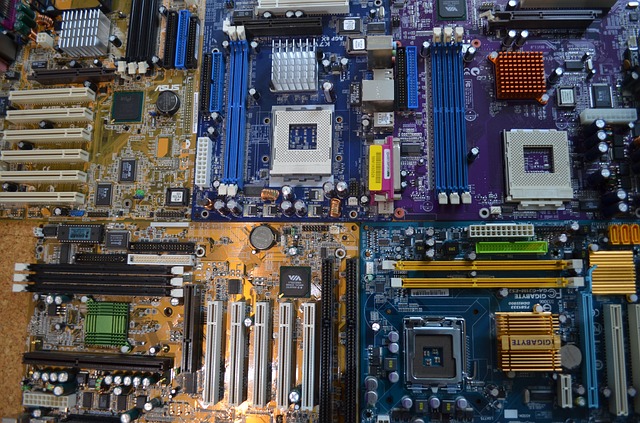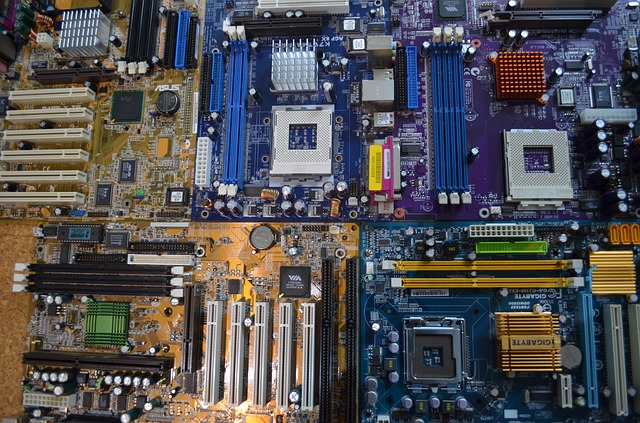The compatibility of the motherboard and the graphics card can be judged by whether the computer is operating normally or whether it is malfunctioning.
Motherboard and CPU compatibility:
CPU socket type is not fixed for each generation; for example, Intel CPU I78700K socket type is LGA1151, then go to Baidu or Zhongguancun to search for motherboards that support LGA1151.
Another example is AMD’s CPUFX8350 socket AM3+, which also searches for compatible motherboards.
How to see the motherboard model
At present, there are only two major platforms for desktop processors, Intel and AMD. Among them, Intel is the leader in the desktop CPU market today, and its market share far exceeds AMD. Therefore, when everyone installs a machine, the Intel platform is the most encountered.
Because AMD and Intel platforms have different compatible motherboards, this is something new DIYers need to pay attention to. If AMD motherboards are paired with Intel processors, they will make jokes, they are incompatible, and they can’t be installed on each other.
Intel platform
H81, B85, H87, Z97 motherboards are compatible with all processors of Intel’s fourth-generation Haswell platform, such as Celeron G1840, Pentium G840, Core i3 4150/4160/4770, i5 4590, E3, i7, etc., involving many models.
B150 and Z170 belong to a new generation of motherboards, which are mainly compatible with all six-generation CPUs, such as i5-6600K, i7-6700K, and so on.
AMD platform
The current desktop CPUs of the AMD platform mainly include APU, Athlon and Bulldozer platforms. Athlon and APU series processors use the same interface and support the same motherboard.
The A55/A85/A88 motherboard supports a full range of Athlon series and APU series processors, uses FM2/FM2+ sockets, supports A10 7700K, Athlon ii X4 860k and other processors.
There are also some older CPUs and bulldozer processors that use AM3 and AM3+ interfaces and need to be matched with some old-fashioned motherboards, such as 970 series motherboards.
Intel is the leader of the desktop CPU market today, with a market share far surpassing that of AMD, so when everyone installs the machine, the Intel platform is the most encountered.
Because Intel’s different generations of CPUs often use different series of motherboards due to interface changes, so when you match the CPU and the motherboard, you must pay attention to compatibility.
How to match Intel’s CPU and motherboard
There are many models of Intel processor products, and they are usually matched with motherboards by generation. This article will not discuss the problems of matching old CPUs and motherboards that have been eliminated.
The main focus is on the fourth-generation Haswell processors and the mainstream processors that are still installed today. The problem of matching the sixth-generation Skylake processor with the motherboard.
Steps to know the compatibility between the processor and the motherboard
If you dare to check yourself the compatibility between the processor and the motherboard of your computer, you will need to have the instruction manual for the motherboard , a star screwdriver in most cases and a flashlight to facilitate vision.
First, take the motherboard’s instruction manual and look for the list of specifications, which should list the type of processors compatible with the motherboard of each computer.
The next step will be to open the computer case , but first turn off the computer and disconnect it from the power. Unscrew and remove the box, and with the help of a flashlight try to access the plate in order to know the manufacturer number as well as the plate model, since with them, you should not have any problem when obtaining any details about supported processors.
With this information, go to the manufacturer’s website and try to find out the different processors that are compatible for your computer . If you still have any questions and want to go easy, contact the technical support of your motherboard, so they can provide you with all the information you need to know.
CPU-Z
The other way to know if a specific processor is compatible with your motherboard is through the CPU-Z program , which we have already talked about previously. It is very simple and it is completely free.
The first thing to do is download it, install it on your computer and open it, accessing the ” Main board ” tab directly , where you can find out both Motherboard and processor compatibility are essential for mounting a PC. We show you all the details to take into account.
When we are going to assemble a PC, we must start with the pillars of the house: the motherboard and processor . They both have to be consistent, which means that they must be compatible with each other.
We cannot mount an AMD processor on an Intel motherboard and vice versa. As we continue to see certain doubts, we have launched ourselves to develop this small guide to dispel them.
The brand and the model of the board. The next thing will be to verify the processors that are compatible with your motherboard, and for this the most efficient thing is to do it through the equipment manufacturer’s page , or through specialized computer pages. Once there, try to access the technical specifications of the motherboard.
Motherboard and processor compatibility

Processor
We start by explaining the compatibility of motherboard and processor for the second because we know that it is the first thing you look at when you are going to mount or configure a PC.
Processor generation
The family or generation of processors is very important because we may be buying an old input processor. Logically, an older processor will be cheaper than its new generation equivalent. So, you have to inform yourself about which processor covers your demands.
There are sockets or sockets that are backward compatible with previous generations, such as the AM4 with AMD’s , for example. The generation is usually accompanied by the compatibility of your contemporary socket.
I would like to make a division between Intel and AMD because that is where the war is going to be:
- Intel. In its 9th generation , you have from the Intel i3 to the i9 in the enthusiast range. All these processors are compatible with the LGA 1151 socket .
- AMD. We will focus on their Ryzen processors, which are in their 3rd generation. Although we have Ryzen 3 which is the most basic but with integrated graphics, we also find Ryzen 5 , Ryzen 7 and Ryzen 9 . All are compatible with the AM4 socket .
Overclock and Turbo
Within the processors, we find the aspect of overclocking and turbo. In the data sheet of the processor, we find its Clock Speed and its Clock Speed Turbo or Maximum Boost Speed. The first refers to its normal speed, while the other two refer to a turbo that the processor does automatically.
Starting with the turbo, it is a technology that increases the speed of the processor frequency by several MHz or even by more than 1 GHz . It does this automatically, but many users choose to do a manual overclock, thus boosting all cores.
As for overclocking, here you have to pay close attention. In the Ryzen range there is no problem, but in Intel only the « K ” can be overclocked. We will have to do it manually, which requires advanced computer skills; sometimes the processor will do it automatically. On the web we have different guides that can help you.

